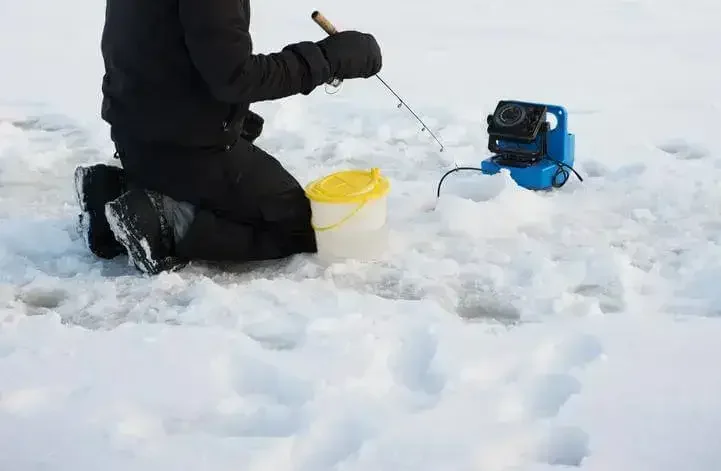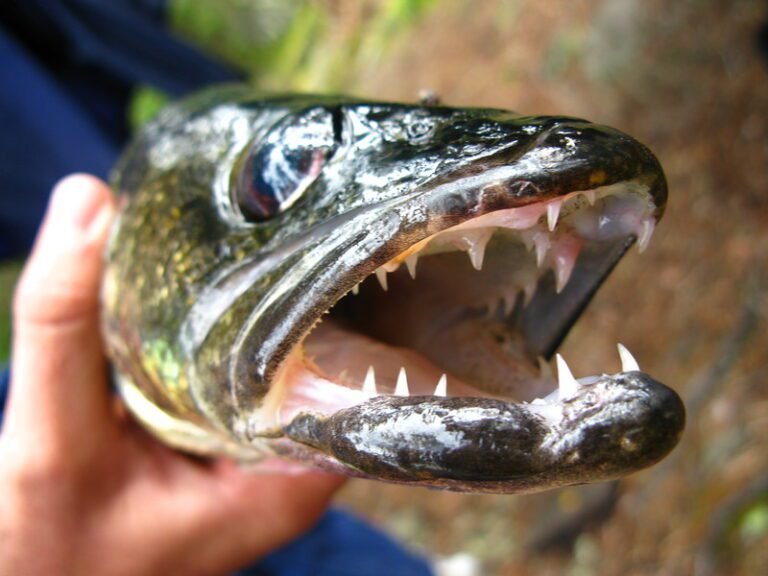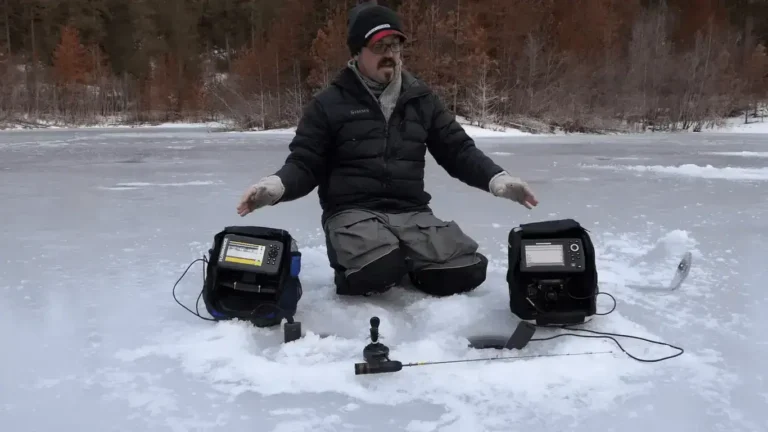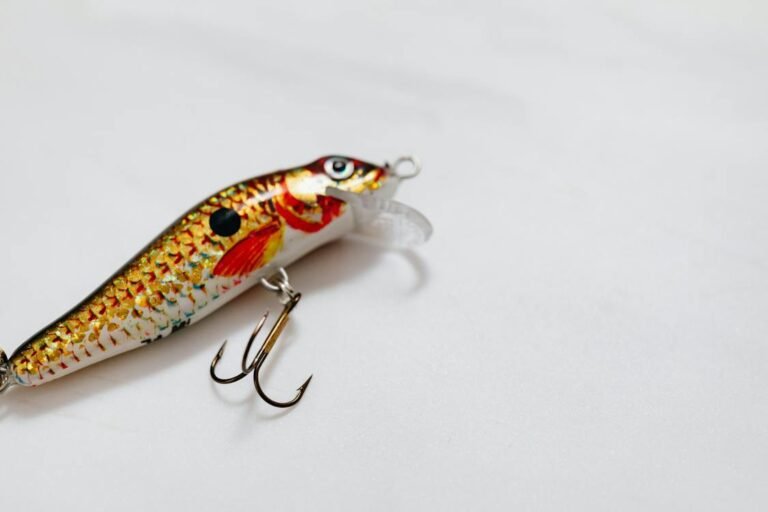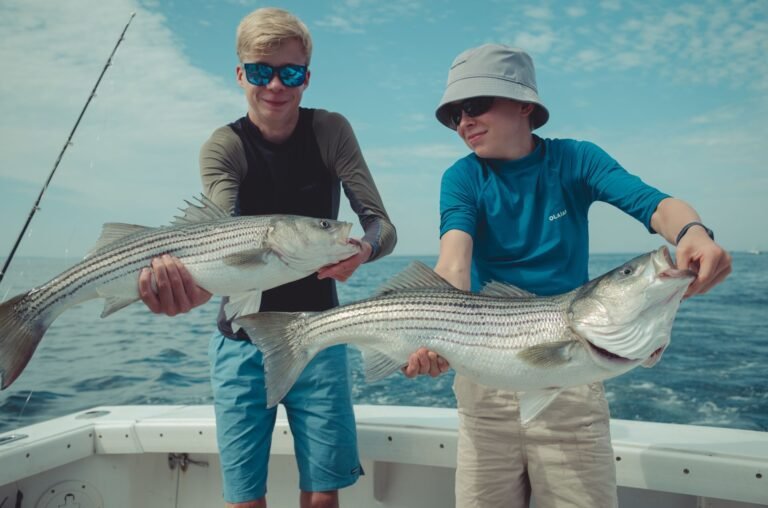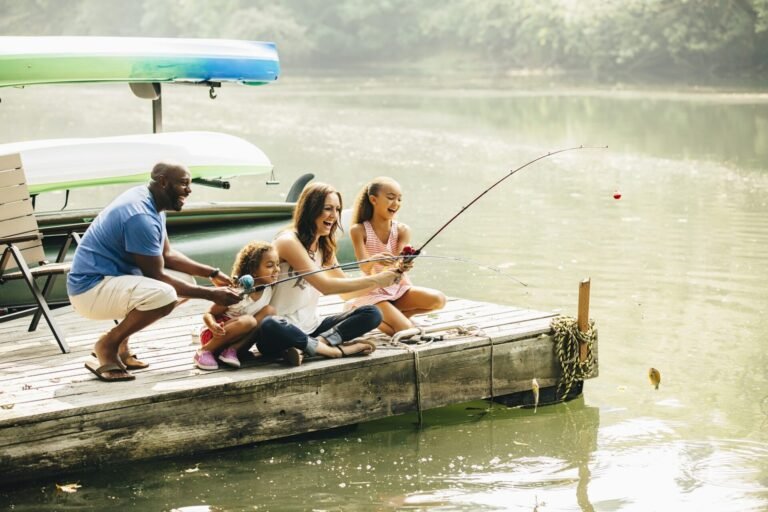The joy of catching fish during the winter months can be experienced in a special and thrilling way by ice fishing. Whether you’re an ice fisherman with experience or a novice, this ancient tradition delivers a gratifying and hard experience. However, it’s crucial to realize that ice fishing is different from fishing in open water and that you’ll need to be aware of certain safety procedures and specialized gear.
This article will cover all the information you require to begin ice fishing, including safety advice and techniques for capturing fish through the ice. So gather your warmest clothing, and let’s get started!
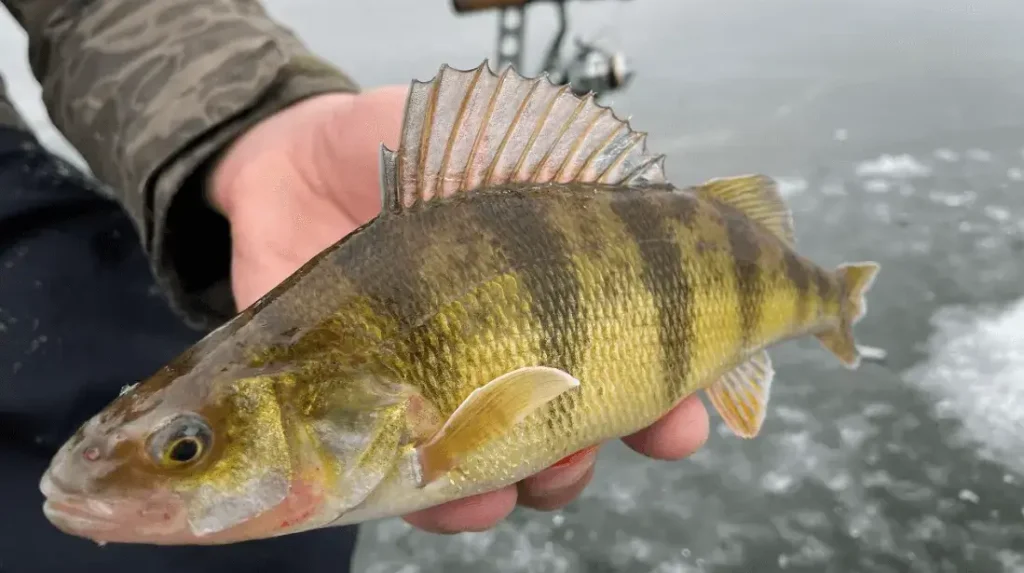
Preparing For Ice Fishing Basics
Brave the cold and reel in the big catch: Get ready for the ultimate Ice Fishing adventure
Get A Fishing License
Getting a fishing license is an essential step in preparing for ice fishing. In most states, it is illegal to fish on bodies of water, especially frozen ones, without a valid fishing license.
You must go to an authorized merchant or government official website to obtain a fishing license. Usually, you will be asked for personal information such as your name, address, and birthday. In some places, you might also need to provide identification, such as a driver’s license or state ID.
The price of a fishing license varies from state to state and may also differ according to things like how long the license is valid for and whether or not you live in the state. Additionally, it’s crucial to remember that there are several sorts of fishing permits available, including freshwater and saltwater licenses, so make sure you get the right one for the kind of fishing you’ll be doing.
Avoid Going Alone
When ice fishing, it’s crucial to avoid going by yourself. Being alone out on the ice might not only be risky but having a friend there can also make the experience more fun. Here are some tips on how to ice fish ethically and safely with a friend:
- Always tell someone what you have planned. Before you go, inform someone where you’re going and when you expect to return. In such a case, someone will know where to seek you if something does occur.
- Bring a friend. As previously said, going ice fishing alone is not a smart idea. Bring a companion and someone who can assist you in case of need.
- Bring safety gear with you. Bring some ice picks, a rope, and a flotation device in case you fall through the ice.
- Test the ice. Always check the thickness of the ice before you head out. The general rule of thumb is that ice should be at least 4 inches thick to support a person.
- Observe the weather. Watch the weather prediction and be ready for any alterations. If the weather gets poor, it’s advisable to return to shore.

Find Suitable Locations For Ice Fishing
Finding proper ice fishing places is an important element of the procedure. When looking for the ideal location to set up your fishing hole, there are a few important factors to take into account. Here’s a quick overview of how to ice fish and identify the finest spots:
- Seek for spots with clear ice. In general, clear ice is more durable and secure than foggy or opaque ice. Setting up your fishing hole may take less time because clear ice is also simpler to drill through.
- Look for locations with active fish. Fish are more likely to be found in places with a plentiful food supply, such as weed beds or drop-offs. Search for regions with a lot of fish activity, such as those where there are schools of fish swimming about or dimpling on the surface.
- Try to find places where you can access the ocean. Fish frequently go from open water to the ice, so it’s a good idea to locate your fishing location next to a hole in the ice or an area with flowing water.
- Locate places with lots of covers. To hide from predators, fish frequently seek out locations with cover, such as weed beds or structures like logs or rocks.
- Look for regions that are easily accessible. Make sure your location is accessible, especially if you intend to fish in heavy snow or on a remote lake.
Educate Yourself In Safety
Safety should always come first while learning “how to ice fish.” Your ice fishing expedition may be made safe and fun by understanding the potential risks and how to prevent them. Here are some things to remember:
- Recognize the ice. Before you venture out, ensure you are familiar with the ice’s properties, such as its firmness and thickness. Always check the ice before venturing out, and be mindful of any alterations in the weather that can reduce its safety.
- Be sure to dress and prepare appropriately. Wearing layers of clothing will keep you warm, and a life jacket or other flotation gear will keep you afloat in an emergency. To avoid slipping and falling, wear insulated boots with adequate grip. Make sure to check out our guide on the best ice fishing boots.
- Know how to self-rescue. It’s crucial to know how to do a self-rescue if you slip through the ice. It involves understanding how to use ice picks and roll onto the ice.
- Bring protective gear. Bring a rope, a whistle, a first-aid kit, a flashlight, and a mobile phone with you at all times.
- Learn about the laws and regulations in your area. Make sure you know any local ice fishing rules and regulations, including any limitations on the kind of fish you are allowed to capture or the times of the year when ice fishing is allowed.
Bring The Right Gear
The proper equipment is one of the most crucial parts of learning how to ice fish. Having the right tools may make all the difference in having a successful and pleasurable vacation. The following considerations should be made while you gather your equipment:
- Fishing rod and reel: Ensure that you pack a fishing rod and reel appropriate for the fish you intend to catch. A light-action rod and reel will do just fine if you’re after panfish, but a medium-action rod and reel will perform better for larger fish.
- Fishing line: Bring a fishing line that is suitable for the species of fish you intend to catch. Fluorocarbon, monofilament, and braided lines are all excellent choices, but it’s important to ensure they are appropriate for the species you are pursuing.
- Auger or hand drill: You will need an auger or a hand drill to make holes in the ice. Make sure to bring the appropriate size for the ice thickness you expect to find.
- Safety equipment: Bring a pair of ice picks, a rope, a flotation device, a first-aid kit, and a whistle. It’s also a good idea to bring a cell phone, a flashlight, and a compass.
By bringing the right gear, you can increase your chances of having a successful and enjoyable ice fishing trip. Remember to always check the weather forecast and ice conditions before heading out and adjust your gear accordingly. If you want to know a brief guide on ice fishing gear for beginners, check out this guide!
Use The Right Bait And Tackle
Choosing the appropriate bait and equipment could significantly impact your performance when learning how to ice fish. Because various fish species have varied eating preferences and behaviors, it’s crucial to pick the suitable bait and gear for the kind of fish you intend to capture. Here are some things to remember:
- Bait: When it comes to bait, various fish species have varied tastes. For instance, panfish like crappies and bluegills favor small baits like wax worms or tiny minnows. Bigger fish, like pike and lake trout, prefer bigger baits, like smelt or herring.
- Jigs: Jigs are a common selection for ice fishing since they can replicate the movement of tiny baits and insects. It’s crucial to experiment with several possibilities to choose the ideal one because different fish species have varied preferences for jig size and color.
- Rigs: By presenting the bait or jig in a particular way, rigs increase the likelihood that the fish will bite. When it comes to rig types and presentations, different fish species have varied preferences. Therefore it’s crucial to conduct a study and test out many possibilities to determine which is most effective.
- Hooks: Hooks come in different sizes and styles, and it’s important to choose the right size and style to match the bait and target species.
- Reel: Make sure to bring a reel suitable for the type of fish you plan to catch. A light-action reel will work well for panfish, while a medium-action reel is better for larger fish.
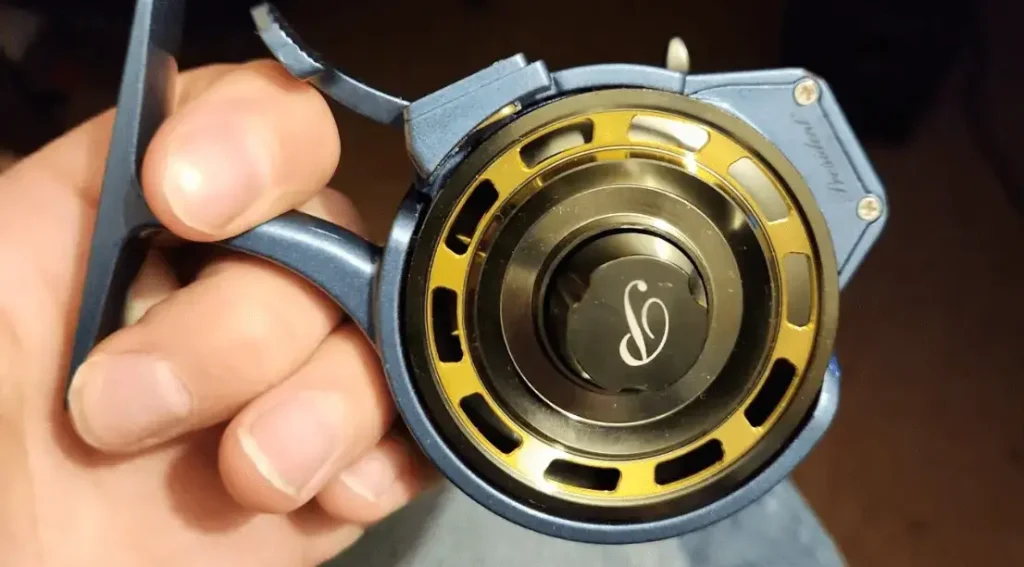
Setting up Your Hole
Here’s a step-by-step guide on how to ice fish by setting up your hole:
Step 1 – How To Ice Fish
Choose a spot on the frozen body of water where you want to cast your line first. Look for regions with good depth and structure, such as drop-offs or weed beds.
Step 2 – How To Ice Fish
Next, use an ice chisel or auger to make a hole in the ice for your fishing hole. The hole should have a minimum depth of 8 inches and a minimum diameter of 8 inches.
Step 3 – How To Ice Fish
After drilling the hole, use a skimmer to remove any slush or debris that has gathered on the bottom.
Step 4 – How To Ice Fish
Next, drop your fishing line down the hole and wait for a bite.
Step 5 – How To Ice Fish
If you don’t have a fishing line, you can use a jigging rod, which is a specialized ice fishing rod designed for jigging.
Step 6 – How To Ice Fish
Last but not least, you may use a fish finder to discover schools of fish beneath the ice and to keep track of the depth of your fishing hole.
Fishing In The Ice
Now, you have done everything. Get ready for fishing!
Determine The Depth of The Water
Here’s a guide on how to ice fish by determining the depth of the water:
- It is important to know the depth of the water where you will be fishing before drilling a hole in the ice.
- Using a fish finder is one method to accomplish this. Fish finders are electrical devices that measure the depth of the water and the presence of fish using sonar technology.
- If you don’t have a fish finder, you can also measure the depth of the water with a measuring tape or a piece of marked fishing line.
- You can also mark the depth on a long stick or rod by carefully lowering it into the water until it reaches the bottom.
- Once you know the depth of the water, you can adjust your fishing gear and techniques accordingly.
- Keep in mind that different species of fish inhabit various depths, so being aware of the water’s depth might help you focus on the fish you want to capture.
Place Your Bait on Your Lure
Here’s a guide on how to ice fish by placing your bait on your lure:
- Once you have drilled your hole, it’s time to place your bait on your lure.
- The kind of bait you use will depend on the sort of fish you are attempting to capture, but popular options include worms, minnows, and maggots.
- Start by attaching your bait to the hook of your lure, using either a single hook or a treble hook.
- When employing a single hook, thread the bait onto the hook and raise it to the eye of the hook.
- To use a treble hook, thread the bait onto one of the hooks and push it up to the eye of the hook.
- If you are using a jigging rod, the lure will already have a hook attached.
- Next, slowly lower the bait and lure it into the hole, keeping the line taut so you can feel any bites.
- Adjust the depth of your bait by reeling in or letting out the line. Wait for a bite once the bait and lure have been placed in the water, and be ready to set the hook if a fish eats the bait.
Wait For Your Fish To Bite
Now it’s your time to wait for a bite. If you’re using a tip-up, set it over the hole so that the edges are touching. If not, you can support your rod so that it is in a secure position in case a fish bites your line.
- It is an excellent opportunity to play games with your fishing buddies, speak, or simply relax in the beautiful outdoors.
- Drill a new hole if your line is still not receiving any bites after a few hours. You can drill another hole right where you are, but it will be preferable if you travel a few hundred feet away and drill the hole there.
Reel Your Fish In
Reel your line in or raise your line out of the hole when the fish bites, lifting the fish with it. Remove the fish’s hook from the line. The fish can be put into your bucket to clean later.
Best Times To Ice Fish
The optimum times to ice fish vary on the kind of fish and the region. The best times to catch fish are typically early in the morning and late at night when the fish are most active. Fish are less active in the middle of the day during the winter, so it is advisable to keep away from fishing at this time. Additionally, weather elements like a cloudy sky, mild snowfall or rain, and calm winds can contribute to favorable ice fishing conditions.
How To Find Fish During Ice Fishing
There are several ways to find fish while ice fishing:
- Look for structure: In the water, things like drop-offs, weed beds, and submerged logs are the best locations where you’ll find fish. Fish find protection and food in these locations, making them excellent hunting grounds.
- Use a fish finder: A fish finder can aid in identifying fish by displaying their position and depth on a screen. It might be extremely helpful if you’re fishing in a new location.
- Watch for bird activity: Crows, seagulls, and eagles are among the birds that frequently hover over schools of fish. You can find a school of fish if you keep an eye out for birds.
- Check the temperature: Fish are cold-blooded creatures, so their metabolism slows down in cold water. As a result, they frequently gather in locations with somewhat warmer water. To determine the hottest places, use a thermometer to measure the temperature of several locations.
- Ask locals: Ask locals or other fishermen where they have had success if you are unsure where to fish. They might be able to provide you with useful advice on where to focus your attention.
Types of Fish Caught In Ice Fishing
Depending on the area, several fish species can be caught during ice fishing. The following species are frequently captured through the ice:
Panfish: For ice fishermen, panfish, including bluegills, crappies, and perch, are common targets. They can be caught with tiny jigs or live bait and are frequently seen in shallow areas.
Walleye: Popular game fish like walleye are frequently captured through the ice. They can be caught using jigs, minnows, or other live bait because they are often located in deeper areas.
Northern pike: Northern pike are predatory fish that are frequently taken through the ice. With the help of big minnows, spoons, or jigs, you can catch them because they are generally found in weedy regions.
Trout: Lake trout, rainbow trout, and brook trout are among the trout species that are frequently captured while ice fishing. You can catch them using small jigs, worms, or small minnows in both deep and shallow areas.
Bass: Largemouth and smallmouth bass are also caught while ice fishing. However, they are less common than the other species. They are typically caught with jigs, worms, and live bait in shallow, warmer waters.
FAQs:
what is the biggest ice fishing fish?
The biggest fish caught through ice fishing is the lake sturgeon, which can weigh over 200 pounds.
what you should not do when ice fishing?
Do not fish alone, drill too many holes close together, walk on thin ice, or consume alcohol while ice fishing. Always check ice thickness and safety conditions before going out.
Conclusion:
Ice fishing may be a fantastic way to kill time and take in the beauty of winter nature. Following these guidelines will help you to learn how to ice fish and will also guarantee your that ice fishing experience is safe and productive, regardless of whether you are an experienced angler or are just getting started. Before going out on the ice, make sure to verify the local restrictions so you know what kinds of fish you may catch. Also, remember to have fun!

